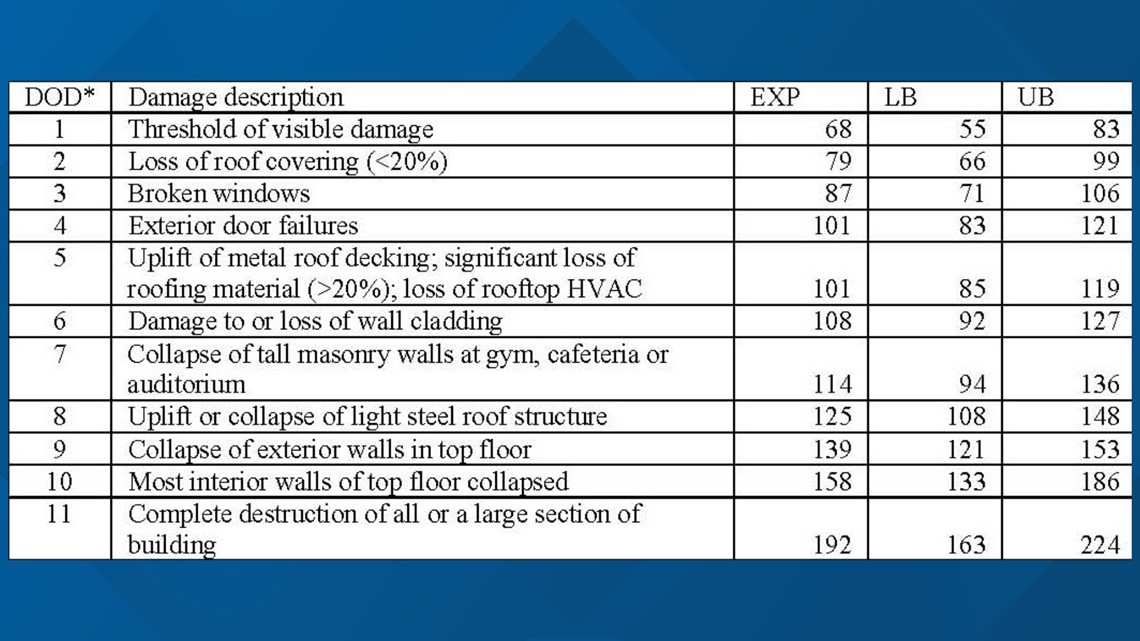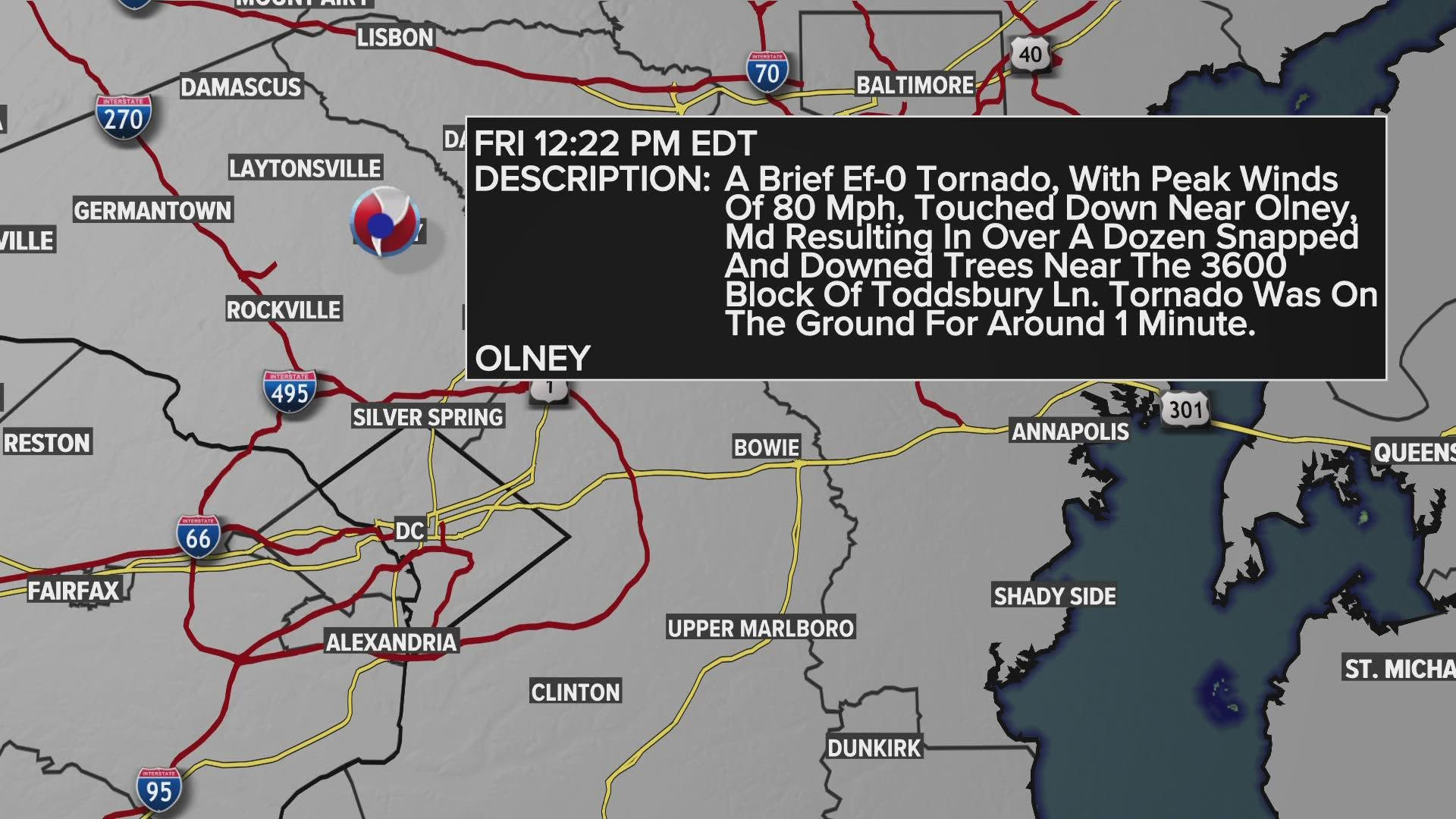WASHINGTON — The National Weather Service (NWS) confirmed multiple tornadoes touched down in Maryland on Friday afternoon and evening. An EF-0 tornado was on the ground for around 1 minute in Olney, Md. It had peak winds of 80 mph. An EF-1 tornado was on the ground for about 9 minutes from Charlotte Hall to Benedict Md. It had peak winds of 90 mph.
Here's a look into the process the National Weather Service takes to determine the strength of a tornado.
After potential tornado moves through an area, the National Weather Service will send a crew to survey the damage. They will determine if the damage was caused by an actual tornado or something else, possibly straight-line winds or thunderstorm damage.
The surveyors will look at the pattern of the damage. If it is scattered, then it was likely a tornado or thunderstorm damage. If debris has all fallen in the same direction, then it was likely straight-line wind damage.
If the type of damage turns out to be tornadic, the next step is to determine the strength of the tornado. NWS uses the Enhanced Fujita (EF) Scale to rate a tornado between EF-0 and EF-5 depending on estimated wind speeds and damage. Below is a look at the EF Scale and the corresponding wind speeds.


To assess the damage, NWS runs through its list of 28 different Damage Indicators (DI). Each DI has different Degrees of Damage (DoD) that help pinpoint how strong the tornado was.
Lets use a school building as an example.
If the NWS was assessing the damages to a school they would first check that the building meets the following requirements.
- Generally large one or two story buildings with flat roofs.
- May contain gymnasium, cafeteria and auditorium with large structural spas; may have a basement.
- Classroom wings have interior hallways with bearing or non-bearing interior walls.
- BUR or single ply membrane roof covering with or without gravel.
- Structural system may consist of an all steel structure or an all reinforced concrete structure or a combination of both.
- Roof structure may be light steel construction with open web joists supported on steel beams; Corrugated metal roof deck with rigid insulation or poured gypsum deck.
- Exterior walls constructed of concrete or clay blocks with brick veneer, stucco or EIFS; metal and glass curtain walls; walls may have more than 30% windows.
Then the NWS will look for the following damage to the structure. It decides whether the damage falls within the upper bound (UB), lower bound (LB), or the expected (EXP) wind speeds. Those values for a school building can be seen in the following chart and graph.




Once the DoD has been determined, NWS will evaluate the possible wind speeds that could have caused that type of damage. This process is then repeated on different structures until a final rating can be reached.
Regarding the tornado in Olney, trees were used as the DI. The NWS reported that the DoD was dozens of snapped and downed trees which lead to rating the tornado as an EF-0. For the Charlotte Hall to Benedict tornado trees and one- or two-family residences were used as the DI. The NWS reported that the DoD was uprooted and snapped trees as well as damage to siding and broken windows which lead to rating the tornado as an EF-1.

